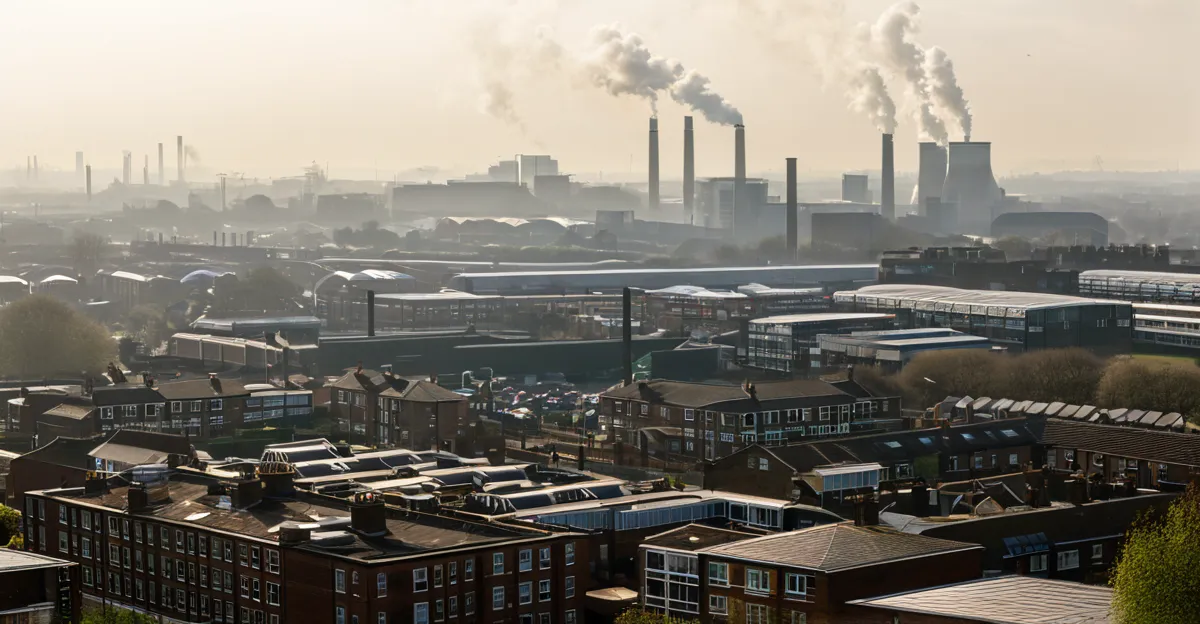Impact of Air Pollution on Health in the UK
Understanding the public health impact UK faces due to air pollution begins with assessing its levels and main pollutants. In the UK, the predominant pollutants include nitrogen dioxide (NO2), particulate matter (PM2.5 and PM10), and ozone, all of which frequently exceed recommended safety thresholds, particularly in urban areas. According to UK air quality statistics, NO2 levels remain a considerable challenge especially around busy road networks, while particulate matter contributes significantly to health risks nationwide.
The public health impact UK experiences from these pollutants is substantial. Exposure to polluted air is linked to increased hospital admissions and premature deaths, particularly from respiratory and cardiovascular conditions. Recent studies highlight that annually, tens of thousands of premature deaths in the UK are attributed to long-term air pollution exposure. For example, particulate matter alone is responsible for an estimated 28,000 to 36,000 premature deaths each year, reflecting its severe health implications.
Also to discover : What are the benefits of preventive healthcare in the UK?
Key findings from UK government bodies and health organizations underscore the urgency. Reports from Public Health England and the Department for Environment, Food & Rural Affairs emphasize that improving UK air quality statistics is not solely an environmental issue but a critical health priority. They identify vulnerable groups, such as children and the elderly, who bear disproportionate health burdens from air pollution, amplifying the public health impact across communities.
In summary, the evidence illustrates that air pollution remains a dominant factor undermining health in the UK, with significant contributions to chronic diseases and mortality rates. Addressing these challenges requires ongoing surveillance of UK air quality statistics alongside tailored public health strategies targeting pollution hotspots.
Also read : How can the UK healthcare system become more sustainable?
Major Health Effects Linked to Air Pollution
Air pollution has a profound influence on respiratory diseases in the UK, contributing significantly to conditions such as asthma and chronic obstructive pulmonary disease (COPD). According to air pollution health effects UK research, exposure to pollutants like NO2 and particulate matter exacerbates airway inflammation and reduces lung function. In fact, studies estimate that thousands of new asthma cases per year in the UK are directly attributable to outdoor air pollution, underlining the ongoing public health challenge.
Cardiovascular health is similarly compromised by polluted air. Epidemiological analysis of UK populations shows elevated risks of heart attacks, strokes, and other circulatory diseases correlating with long-term pollutant exposure. Mortality data reveal that cardiovascular-related deaths linked to air pollution form a substantial portion of premature mortality in the UK. This connection reflects how fine particulates penetrate the bloodstream, promoting arterial inflammation and clot formation.
Recent UK-based studies deepen understanding of these consequences by quantifying disease burden through detailed statistical modelling. These analyses emphasize that reducing air pollution levels could decrease hospital admissions for respiratory and cardiovascular events substantially. Consequently, the air pollution health effects UK data strongly support intensified mitigation efforts to alleviate this serious public health impact.
Vulnerable Populations and Disparities
Air pollution disproportionately affects vulnerable groups within the UK population, particularly children, the elderly, and those with preexisting health conditions. These groups experience amplified public health impact UK due to physiological sensitivities and greater exposure risks. For instance, children’s developing lungs are more susceptible to damage from pollutants like nitrogen dioxide and particulate matter, resulting in higher rates of respiratory illnesses.
Geographic and socioeconomic disparities further influence exposure levels and health outcomes. Urban areas with dense traffic and industrial activity, such as London, Birmingham, and Manchester, often record elevated pollution concentrations, exposing residents to greater risks. Lower-income communities frequently reside in these high-exposure zones, creating health inequalities UK that worsen existing social divides.
Recent analyses of UK air quality statistics reveal that residents in deprived neighborhoods suffer disproportionately from pollution-related illnesses, illustrating a clear link between socioeconomic status and air pollution exposure. This disparity underscores the critical need for targeted mitigation efforts that prioritize the protection of vulnerable populations to reduce overall health burdens.
Sources and Trends of Air Pollution in the UK
Understanding the air pollution sources UK is essential to grasping the broader public health impact UK faces. The foremost contributors include road traffic emissions, industrial activities, and domestic heating. Traffic, especially diesel vehicles, remains the principal source of nitrogen dioxide (NO2) and particulate matter (PM2.5), heavily influencing urban UK air quality statistics. Industrial emissions add significant volumes of sulfur dioxide and fine particulates, while residential heating, notably from solid fuels like wood and coal, sustains pollution levels during colder months.
Over the past decade, the UK has witnessed varying trends in pollutant levels. Regulatory measures and technological advances have successfully reduced sulfur dioxide and some industrial emissions. However, persistent NO2 and PM2.5 concentrations near major transport corridors indicate uneven progress. For example, although UK air quality statistics show improvements in rural areas, urban centers such as London and Manchester continue to exceed legal pollution limits, underscoring the complexity of pollution sources and mitigation efforts.
Regional case studies highlight distinct patterns of emissions and their impacts. In London, road traffic dominates air pollution, with congestion exacerbating pollutant accumulation. Conversely, in the Midlands, a blend of industrial emissions combined with traffic contributes to poor air quality. These regional variations emphasize the need for targeted policies addressing specific air pollution sources UK and adapting to localized environmental trends to reduce the long-term public health impact UK.
Response, Mitigation, and Public Policy Initiatives
The UK government has implemented multiple air pollution policy UK measures aimed at reducing pollution and protecting public health. Chief among these are Clean Air Zones (CAZ) introduced in major cities, which restrict the most polluting vehicles, thereby targeting the dominant sources of nitrogen dioxide and particulate matter. These zones exemplify practical mitigation strategies designed to reduce emissions from traffic, a leading contributor highlighted by UK air quality statistics.
Since these policies’ introduction, monitoring data indicate localized improvements in air pollution levels, especially within regulated areas. However, wider urban and rural gains remain uneven, underscoring the complexity of tackling diverse pollution sources. The effectiveness of air quality improvement initiatives depends not only on government action UK but also on coordinated efforts from local authorities and industry stakeholders.
Public awareness campaigns have played an essential role in supporting policy goals by encouraging behavioral changes such as increased use of public transport, cycling, and adopting cleaner vehicles. Individual actions reinforce broader mitigation strategies and help reduce the overall public health impact UK experiences from air pollution. Ongoing government commitment to updating regulations and fostering innovation will be critical to sustaining progress in improving UK air quality statistics and health outcomes.





